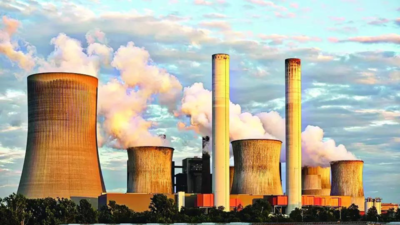ARTICLE AD BOX

The central government on Monday defended its controversial move to ease sulphur dioxide (SO₂) emission norms for thermal power plants, asserting that the revised rules were based on detailed scientific analysis and extensive consultations.
It also criticised media reports calling the move a “regulatory dilution”, saying they had “grossly misinterpreted” the policy’s intent and rationale.The clarification comes in response to mounting criticism following the environment ministry’s July 11 notification, which extended emission deadlines and exempted hundreds of coal-fired plants—classified as Category C—from installing flue gas desulphurisation (FGD) units.In a statement issued Monday, the ministry said: “Media reports misrepresent both the scientific evidence and the environmental policy rationale underlying the revised notification.” It emphasised that the decision followed consultations with stakeholders and premier research institutions, including IIT Delhi, the National Institute of Advanced Studies (NIAS), the National Environmental Engineering Research Institute (NEERI), and the Central Pollution Control Board (CPCB).
“Contrary to claims of regulatory dilution, the ministry's decision represents a rational, evidence-based recalibration anchored in current ambient air quality data, sectoral emission trends and broader sustainability imperatives,” the statement said, PTI reported.The ministry pushed back against suggestions that India’s National Ambient Air Quality Standards (NAAQS) for SO₂—last revised in 2009—are outdated, calling such claims “scientifically unfounded.”It said any revision to SO₂ limits must be based on actual contributions to PM2.5 levels and associated health impacts, rather than “rhetorical assertions.” The ministry cited a study by IIT Delhi, which showed that sulfate—formed from SO₂—contributed only 0.96% to 5.21% of PM2.5, and 0.57% to 3.67% of PM10, in cities near thermal power plants.By contrast, the ministry said, claims that sulphur compounds contribute 12–30% to PM2.5 were “unsubstantiated” and not backed by any rigorous Indian study.
“Current exposure levels provide no credible evidence to suggest that SO₂, under prevailing ambient conditions, is a major public health concern,” it said.The revised notification retains the December 2027 compliance deadline for Category A plants—those located within a 10-km radius of the National Capital Region or cities with a population of over 1 million.For Category B plants—those near critically polluted areas or non-attainment cities—the ministry has moved from a fixed 2025 deadline to a case-by-case assessment approach.The most sweeping change applies to Category C plants, which comprise the bulk of India’s thermal fleet. These units have been completely exempted from installing FGD units, provided they comply with prescribed stack height norms by December 31, 2029. The earlier deadline was December 2026.Of roughly 600 thermal power units in India, 462 are in Category C and 72 in Category B, according to the ministry.India first announced SO₂ emission standards for coal-based power plants in December 2015, mandating FGD installation within two years.
But nearly a decade and four extensions later, 92% of plants are yet to comply.Environmental groups have expressed concern that this rollback will worsen India’s already severe air pollution crisis. Medical experts have long linked SO₂ exposure and secondary PM2.5 formation to respiratory and cardiovascular ailments.However, the government insisted that its revised standards strike a balance between environmental objectives and energy sector realities. “This is not a dilution, but a strategic recalibration based on evolving scientific and sectoral evidence,” the ministry said.



.png)
.png)
.png)
















 4 hours ago
3
4 hours ago
3









 English (US) ·
English (US) ·